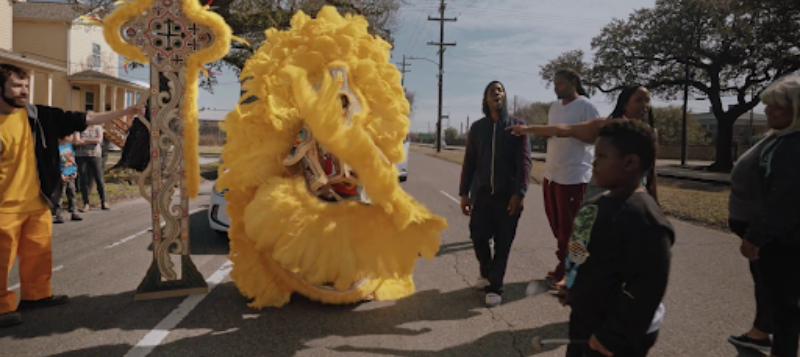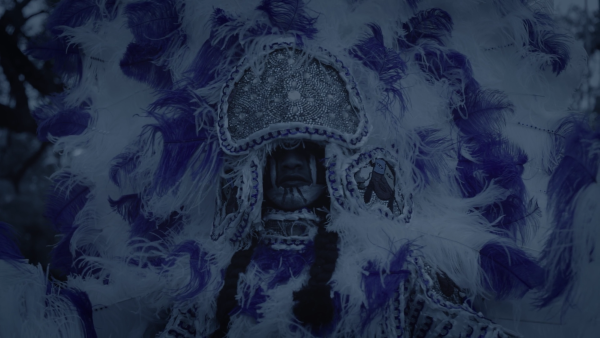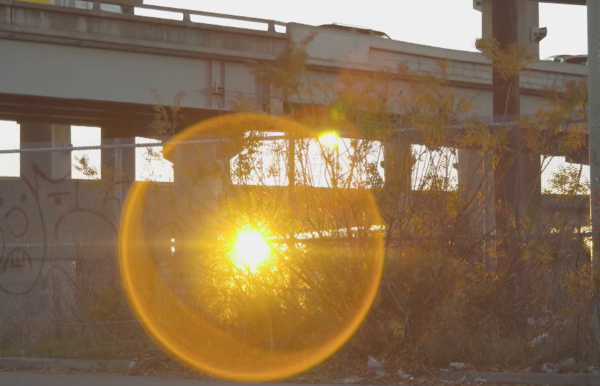Virtual Film Empowers Arts Communities
Review of All on a Mardi Gras Day and The Maze at Northwest Film Forum
Written by TeenTix Newsroom Writer Maia Demar and edited by Teen Editor Tova Gaster

“You not gonna fight ‘em, you not gonna shoot ‘em, you not gonna stab ‘em, you gonna kill ‘em with a needle and thread.”
These are the words spoken by Big Chief Demond Melancon of the Young Seminole Hunters, who stars in the short documentary All on a Mardi Gras Day. Directed and edited by Michal Pietrzyk, the 22 minute film follows Demond and his friends as they prepare costumes for the biggest day in New Orleans: Mardi Gras. Demond makes his own costumes from scratch every year, each one more elaborate and feathered than the last. The film’s perspective on African American men defies many stereotypes and assumptions. There are so many mental benefits from being creative, and the film is especially important due to the stigma surrounding men of color discussing mental health.
After dealing with addiction earlier in his life while living with his mother who was also using, Demond turns to the art of Mardi Gras costuming as a means of creative expression. He spends all year making his costume for the Mardi Gras parade in Uptown New Orleans, and although the materials and time commitment aren’t an easy financial commitment, it’s worth it for the sense of community Demond feels. This aspect of Mardi Gras, the vibrant feathered headdresses and beaded suits, shoes, and gloves, is a keystone of African American tradition in New Orleans. Pietrzyk paints a vivid picture, much like the beads on Demond’s costumes, of the sometimes underrepresented traditions of Southern black life that only comes out once a year.

“You gotta be disciplined to learn the needle dance,” Demond contemplates whilst sewing tiny beads onto his suit. The frank shots used for the film make it all the more compelling, almost as if you’re there with the team as they prepare for the big day. Pietrzyk leaves nothing from the process out, from the first day of making the costume to the shot of Demond wearing it on his way to the parade in the back of a U-Haul. The film deliberately humanizes people and cultures who are often heavily and unfairly stereotyped. All on a Mardi Gras Day introduces us to a perspective of African American culture that many of us may not have been aware of.
Following the screening of All on a Mardi Gras Day was the short film The Maze. It tells the story of the MacArthur Maze in San Francisco, an essential highway which affected the lives of many in the area, particularly minorities, and goes on to spark a bigger conversation about the use of transportation systems to displace people of color and the lower class. The highway is dubbed the Maze because of how it sections off different parts of the city in a way which is both confusing and prone to heavy traffic. The director, Serginho Roosblad, sews together stories of people currently living under the highway with stories of the past describing how the ports and railroads separated residents from more technologically advanced parts of the city, and gave them nothing in return.
For example, Roosblad includes shots of a protest going on next to the Maze where a Native American speaker demonstrates that the highway had been built on the largest Native burial ground in San Francisco, Shellmound. In return, all the city gave them was a small, rocky fountain next to the former site and a street called Shellmound Street. “There’s no honor left,” says the speaker. More shots provided glaring juxtapositions of nature and extreme urbanity meshed together. Peaceful shots of sea birds digging in the sand are followed by ominous pans of the Maze looming over the beach.

Although Roosblad does provide enlightening knowledge about the Maze and the cultural havoc it wreaks, I would have liked to see more follow up with the people whose lives were displaced by the incoming of the highway, and with the people it brought with it. Most of the stories, from the Native protestors to the homeless Black people and extradited minorities, aren’t given satisfying conclusions, nor are they strongly tied together. It would have been interesting to see how the voices of the displaced are making changes, and what else can be done to combat gentrification and cultural segregation.
There are definite similarities between both short films. Both discuss senses of belonging in a way I’ve never seen before. In All on a Mardi Gras Day, Demond gains a community through his costumes and becomes the prominent “Big Chief,” while previously he’d been an aimless addict. In The Maze, on the other hand, people had lost their sense of belonging due to the flood of condos and rich white people brought on by the building of the Maze, pushing long-time residents out. The interviews in Roosblad’s film highlight the violent effects of gentrification that need to be addressed. Both films are necessary. They show pieces of lives that would have been less known if the films hadn’t been made, and pieces of people whose identities are threatened because of their surrounding environments. Personally, I was mostly unaware of the Black Mardi Gras culture in New Orleans until I watched Pietrzyk’s movie.
Finally, I think it’s mandatory that I mention that I watched both of these films online. Due to the outbreak of COVID-19 and subsequent self isolating, all Seattle theatres have had to temporarily close. As an alternative, Northwest Film Forum is making their screenings available online. Most of the tickets are free (although they always accept donations!) and all you have to do is select your tickets, wait to receive a password to log in half an hour before screening begins, and enjoy! Although the change is a lot to get used to, it’s incredibly important to support local businesses and art centers. This is one way you can do so!
All on a Mardi Gras Day and The Maze were part of Northwest Film Forum's ByDesign Festival, which streamed online March 18-22, 2020. For event information see here.
Lead photo caption: Film still from All on a Mardi Gras Day, directed by Michal Pietrzyk
The TeenTix Newsroom is a group of teen writers led by the Teen Editorial Staff. For each review, Newsroom writers work individually with a teen editor to polish their writing for publication. The Teen Editorial Staff is made up of 6 teens who curate the review portion of the TeenTix blog. More information about the Teen Editorial Staff can be found HERE.
The TeenTix Press Corps promotes critical thinking, communication, and information literacy through criticism and journalism practice for teens. For more information about the Press Corps program see HERE.


